What's New
Displaying results 2081 - 2090 of 4899
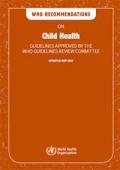
Resource | Guidelines,
The objective of this document is to make available WHO recommendations on child health in one easy-to-access document for WHO staff, policy-makers, programme managers, and health professionals. The compilation can also help better define gaps to prioritize guideline updates.
WHO produces guidelines according to the highest international standards for guideline development. The main principles are transparency and minimizing bias in every step of the process. The process of developing guidelines is documented in WHO Handbook for guideline development. The development process includes the synthesis and assessment of the quality of evidence, and is based on the Grading of Recommendations, Assessment, Development and Evaluation (GRADE) approach.
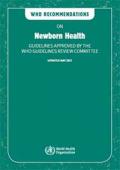
Resource | Guidelines,
The objective of this document is to make available WHO recommendations on newborn health in one easy-to-access document for WHO staff, policy-makers, programme managers, and health professionals. The compilation can also help better define gaps to prioritize guideline updates.
WHO produces guidelines according to the highest international standards for guideline development. The main principles are transparency and minimizing bias in every step of the process. The process of developing guidelines is documented in WHO Handbook for guideline development. The development process includes the synthesis and assessment of the quality of evidence, and is based on the Grading of Recommendations, Assessment, Development and Evaluation (GRADE) approach.
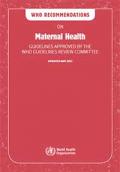
Resource | Guidelines,
The objective of this document is to make available WHO recommendations on maternal health in one easy-to-access document for WHO staff, policy-makers, programme managers, and health professionals. The compilation can also help better define gaps to prioritize guideline updates.
WHO produces guidelines according to the highest international standards for guideline development. The main principles are transparency and minimizing bias in every step of the process. The process of developing guidelines is documented in WHO Handbook for guideline development. The development process includes the synthesis and assessment of the quality of evidence, and is based on the Grading of Recommendations, Assessment, Development and Evaluation (GRADE) approach.
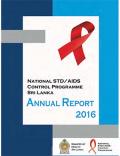
Resource | Publications,
During 2016, a total of 249 HIV cases were newly reported in Sri Lanka. This is the highest number reported in a year since the identification of the first HIV infected Sri Lankan in 1987 and this amounts to about 21 persons newly reported with HIV for a month. However, the reported numbers represent only a fraction of HIV infected people in the country as many infected persons may perhaps not be aware of their HIV status and in addition, stigma and discrimination towards HIV hinder seeking HIV testing services.
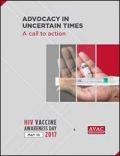
Resource | Publications,
These are hectic times. There is more information coming at all of us than at any time in human history. And in many parts of the world, that information raises cause for alarm or concern. There are multiple top-priority issues. Many things need attention right now.
How, then, do we advocate for an HIV vaccine, which will not be available until into the 2020s, at the earliest? We advance a near-, mid- and long-term agenda with passion and precision. Moreover, advocates—the “we” invoked throughout this piece—can do this work with more confidence than ever. The history of the response to many other epidemics tells us that an effective preventive vaccine is essential. An epidemic can be controlled with treatment and other prevention—just as HIV is coming under control today. But a sustained end has almost always depended on a vaccine. This year on HIV Vaccine Awareness Day, our core message is simple: No end without a vaccine; no vaccine without funding.
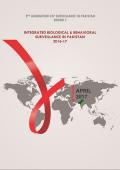
Resource | Publications,
This report provides biological and behavioural information related to HIV infection among four key populations:
- People who inject drugs (PWID)
- Men who have sex with men (MSM)
- Transgender populations
- and Female Sex Workers (FSWs)
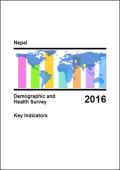
Resource | Publications,
The purpose of the 2016 NDHS was to generate reliable information on fertility; family planning; adult and child mortality; maternal and child health; nutrition; women’s empowerment and domestic violence; knowledge of HIV and AIDS; and other health issues. Data collection for the survey was carried out from June 19, 2016, to January 31, 2017. This report, which presents key findings from the 2016 NDHS, is intended to provide policy makers and program managers with a first glimpse of the survey results. A more comprehensive, detailed report is scheduled for late 2017.
This key indicators report presents a first look at selected findings of the 2016 NDHS. A comprehensive analysis of the data will be presented in a final report in September 2017.
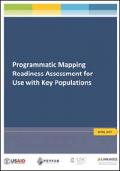
Resource | Tools,
Programmatic mapping (PM) is a collaboration among key population (KP) communities (sex workers [SWs], people who inject drugs [PWID], men who have sex with men [MSM], and transgender people); service delivery providers; and researchers to systematically identify and map the locations where people most at risk of acquiring and transmitting HIV can be reached. It is a tool to focus HIV prevention programing and resources where they will have the greatest impact on the HIV epidemic.
The Programmatic Mapping Readiness Assessment Tool provides an adaptable step-by-step guide for conducting an mapping readiness assessment (MRA). The MRA focuses on the safety and well-being of KPs as a group and individuals within the group; helps identify the potential risks and benefits of conducting PM before initiating the mapping process; and guides discussions among program staff, steering committee members, and community leaders in creating an action plan to address risk.
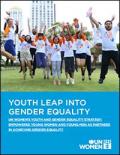
Resource | Publications,
There are 1.8 billion young people aged 10-24 years old in the world—the largest youth population ever. The new 2030 Agenda for Sustainable Development is largely about youth and for the youth. Therefore, we cannot dismiss today’s young men and young women as solely the beneficiaries of development or even as the leaders of tomorrow – for they are already leading today! The force and inspirations of our youngest leaders represent one of the critical drivers for accelerating progress on sustainable development and gender equality.
At UN Women, we recognize the need to include and engage young men and young women with greater seriousness and urgency. We are at a defining moment at which the women’s movement and the youth movement must come together with stronger partnerships and greater focus to ensure that the new agenda for sustainable development delivers for all women and girls, especially those facing multiple and intersecting forms of discrimination and marginalization. This is a critical moment for action.
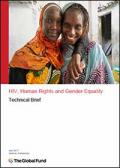
Resource | Publications,
The purpose of this Technical Brief is to assist Global Fund applicants in their efforts to include and expand programs to remove human rights and gender-related barriers to HIV prevention, diagnosis and treatment services. This Brief discusses the barriers these programs help to remove, the various forms the programs take, the need to cost and allocate budget for them, and how to implement them in effective ways and at appropriate scale. It also aims to help stakeholders ensure that, as they are rolled out, HIV health services and programs promote and protect human rights and gender equality.





